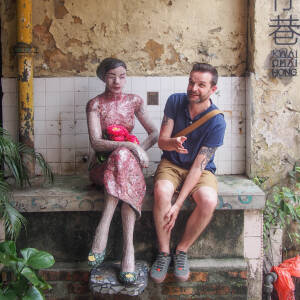Tasty Paste
Took a quick stroll to a Buddhist temple today that is pretty serene considering it's slap bang in the mix in downtown Gwangju. I have no idea when the temple was built but I assume to chaos of the city centre slowly sprang up around it over a period of years.
In the temple grounds were these large stone pots that typically contain gochuchang (red pepper paste). This delicious condiment is a Korean staple and goes great with certain meats, I use it most commonly when eating one of the country's many barbecued meat dishes. Small pieces of barbecued beef or pork are wrapped in a lettuce leaf with a little rice, plus any other tasty side dishes that are knocking around. Add a generous lump of the pepper paste, wrap it all up in the leaf, and you have yourself a delicious mouth-sized parcel of goodness.
It's believed Gochujang was first used in Korea in the late 18th century, chilis themselves having been introduced in the 16th century. It's hard to imagine how Koreans survived before then as the chili is now a hugely integral part of Korean cuisine.
The primary ingredients of gochujang are red chili powder, glutinous rice powder mixed with powdered fermented soybeans, and salt. Extra secret ingredients may be added depending on the maker or region. The extremely common sight of chillis drying in the sun in Korea is so they can then be turned into the powder required for gochujang.
Once the paste is prepared it is naturally fermented in the stone pots above, often over several years. Unfortunately, the introduction of mass production in the 1970's caused the majority of Koreans to stop making their own paste. It can still be seen in some countryside villages though, at Buddhist temples, or occaisionally in the homes of older Koreans.
- 1
- 2
- Canon PowerShot SX130 IS
- 1/50
- f/3.5
- 7mm
- 125

Comments
Sign in or get an account to comment.


